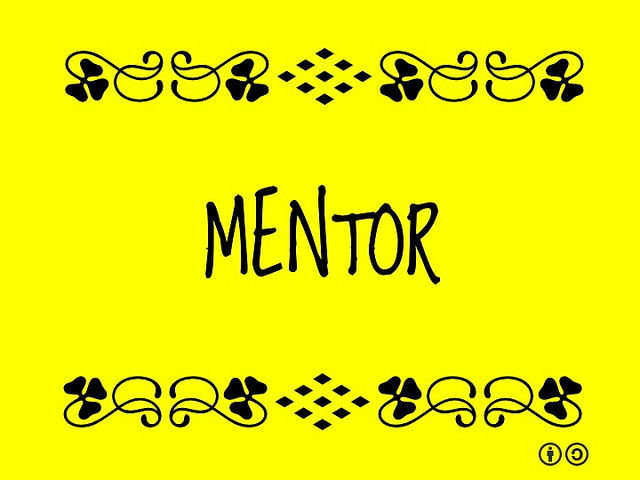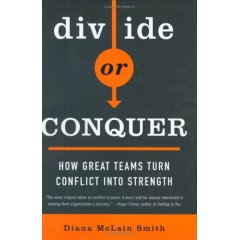|
|
|
Tuesday, May 15th, 2018

In 2013 I wrote,
Actually, a corporation isn’t an entity at all. It’s a group of people all moving in the same direction, united in a shared vision and their efforts to reach a common goal.
In other words, they relate.
Relationships are formed when two or more people interact.
According to Todd Davis, chief people officer for FranklinCovey, with more than 30 years of experience,
It’s the nature of the relationships between those people [think culture – Ed] that really creates a team’s or an organization’s or a company’s competitive advantage. I think it’s critical, and it’s really what makes or breaks the success and effectiveness of an organization.
Up until recently, ‘relationship’ was typically used more in our personal world; using it in conjunction with work is relatively new.
For decades I’ve said that people have two sides to their head, personal and professional, and rarely do they use the skills from one side in dealing with the challenges on the other.
People spend time (and often money) learning to improve their romantic relationships, but don’t necessarily think of tweaking what they learned and using it to improve relationships with their colleagues/subordinates/boss, but they should.
Should, because taking time to really understand where others are coming reduces personal stress.
Should, because relationships are the keys to success — yours, the team’s, the bosses’, and the company’s.
In short, should, because it works.
Image credit: Katy Ereira
Posted in Communication, Culture, Ducks In A Row | No Comments »
Thursday, October 12th, 2017

Have you ever mentored someone in life? How about the reverse where you sought out a mentor? Chances are you have.
Most of us are greater than the sum of our parts and it’s because we have had people in our lives invest in us in one way or another.
We got the chance we didn’t deserve, the role we didn’t qualify for or the lucky break. How did we get to where we are?
Hard work of course, but also a network.
I read an article yesterday that spoke about how college GPA was not as important as the network you build while in school. That network has a greater influence than the A you could make in math class.
I guess I should count myself lucky as I was never going to be a Rhodes Scholar, but I did know how to build a network of folks from different walks of life that I still reach out to years later.
What does this have to do with mentoring? For one thing mentoring is about understanding where someone is and where they want to go.
From there you can offer input on how to achieve that end state. A lot of times in life we have an impact on our network in big and small ways and it’s important to keep that in mind.
Since graduating college 5 years ago I have participated in a mentoring program where I, as an alumni, mentor current business students.
It has been great. I learn what drives an individual and I have a chance to make an impact.
However, I have found that I am the one to benefit from the relationship.
It keeps me grounded, reminds me of where I came from and focuses my gaze on my future.
Mentoring is key to moving forward in life, while also taking someone with you.
Next time you’re in a position to give someone a shot why not say yes?
You might be surprised.
Image credit: Ron Mader
Posted in Personal Growth, Ryan's Journal | No Comments »
Tuesday, September 29th, 2015

All people interactions, whether short or longer, are, in fact, “relationships.”
They are grown and sustained through good communications.
When people are peers, both are responsible for making good communications happen — or should be.
However, when one person outranks the other it becomes the higher ranking person’s responsibility.
As a boss, what do you need to do to be sure you are heard?
What to do is simple; doing it takes effort.
Start by accepting that all people have a mental model through which they hear, so what they hear may have little-to-nothing to do with what is said.
The worst mistake a boss (or anyone) makes is assuming that the person listening has the same model as you.
That said, here is a three-point plan to make sure you are heard.
- Start by carefully explaining your model and your assumptions when giving direction;
- give your people clear, complete information; you do not want to be known as an information drip, i.e., the boss that makes her people come back again and again to fill in the details; and then
- check to be sure that they have actually heard and understood what you mean, as opposed to their version of it.
Do it today, do it all the time and it will become second nature.
Your payback will come in rising productivity, more motivated people, and lower turnover—all positively affecting your bottom line.
Flickr image credit: Graham Dean
Posted in Communication, Ducks In A Row | 2 Comments »
Friday, February 22nd, 2013
A Friday series exploring Startups and the people who make them go. Read allIf the Shoe Fits posts here
 The article accompanying this post may surprise you, but it gets my point across with eloquence. The article accompanying this post may surprise you, but it gets my point across with eloquence.
And while it talks about a romantic relationship the lessons in it apply to all human interactions for they are all relationships.
It’s a woman’s story about two very different romantic relationships and a pet tortoise named Minnie that turned out to be male.
Her first lover became her ex lover because he wanted/needed/expected/demanded/ she be something she wasn’t.
I didn’t want to be in a relationship again where someone wanted me to pretzel myself into someone I wasn’t. “You’re odd,” my ex had told me. “All you want to do is watch movies, read books and play with Minnie.” He meant it as a rebuke, but I kept thinking: what was wrong with that kind of nirvana?
Her second lover, who became her husband, had a different attitude towards her oddness and towards Minnie.
Where my old boyfriend told me how obsessive I was about Minnie, Jeff celebrated our connection, making a fake newspaper cover featuring Minnie and me.
When Minnie finally died many of the author’s connections (including her mother) couldn’t understand her grief—after all, it was just a reptile.
People told me about their dogs and cats who had died, and I thought, it’s easy to love the beautiful, the normal. But what about the gifts of loving the strange, the uncommon, the odd?
Bosses tend to hire people they think are like themselves and get upset when they find out they are actually different—strange, uncommon, odd—and when that happens they would do well to remember the lesson of the porcupines.
Better yet, remember the story of Minnie, because your relationships with your people are the secret sauce that will make you and your company a success—or not.
A strange little figure. Uncommon. Odd. And completely and always beloved.
Image credit: HikingArtist
Posted in If the Shoe Fits, Motivation, Retention | No Comments »
Friday, March 26th, 2010
 Successful communications go a long way to sustaining successful relationships. Successful communications go a long way to sustaining successful relationships.
Relationships are a function of human interaction and whether they are short or long you need to communicate.
When those involved are peers, as in a marriage, good communication is a responsibility of both.
But when one person is subordinate to the other, such as parent and child, it is up to the parent to make sure that whatever is being communicated is understood.
Human interactions in companies are also relationships and follow the same rules.
If you are a manager how do you make sure you are heard?
It’s pretty simple as long as you remember to do it every time, no exceptions.
Did you know that all people have a mental model through which they hear?
That means their understanding of the words you use may have little-to-nothing to do with what you meant when you said them.
It’s a grave tactical error to assume anything else
There are 3 actions you must do to assure that you are heard correctly.
- Start by carefully explaining your model and your assumptions when giving direction;
- give your people clear, complete information on the subject. This includes what you want done, project outlines, deadlines, everything—you do not want them to have to keep coming back and asking for more—getting information should not be like pulling teeth; and then
- check by having them explain it back to you; it’s the only way to be sure that they have actually heard and understood your information, rather than their version of it;
- do it today, do it tomorrow, do it all the time.
It may feel awkward at first, but eventually it will become second nature.
The more these actions are needed the greater the likelihood of them being perceived as nuisance, but not doing them is a career-killer.
Your payback will come in rising productivity, more motivated people, and lower turnover—all positively affecting your personal bottom line.
Image credit: Torley on flickr
Posted in Business info, Communication, Motivation, Personal Growth | No Comments »
Monday, June 9th, 2008
More than 30 years ago I noticed that people seemed to have two sides of their brain—personal and professional—and they rarely utilized the knowledge from one side to address situations on the other. One way that the two areas were kept separate was with language—different terms for what were essentially the same thing. This was especially true about their human interactions.
Many people attended “relationship workshops” on the weekend, but rarely thought to take what they learned to work on Monday because those were colleagues—not relationships.
But that was then and this is now.
 These days relationships are recognized as business lifeblood and everyone works to improve them, so Diana McLain Smith’s Divide or Conquer: How Great Teams Turn Conflict into Strength These days relationships are recognized as business lifeblood and everyone works to improve them, so Diana McLain Smith’s Divide or Conquer: How Great Teams Turn Conflict into Strength is right on the money. is right on the money.
Smith says that all teams “rise or fall on the strength of their relationships,” but instead of the typical discussion of team relationships, strengths, etc., she draws on her 25 years of experience and analyzes a number of high profile relationships to graphically illustrate her points.
She shows us why our belief that the problem is the other guy’s attitude/action and focusing on getting him to change boomerangs convincing the team that the source of the problem is actually us.
Smith says that what must change is how we interact, i.e., change the old patterns and create new ones, explaining how to build work relationships that are flexible and strong—the kind that can survive the tough challenges found in today’s global economy.
She takes you behind the media stories of relationships that made headlines, such as the recruitment and eventual meltdown of Steve Jobs and John Sculley, to illustrate how a broken relationship can cause severe damage not just to the people, but to the company and the brand.
Relationships happen, but great relationships take thought and effort. They’ll never be easy, but Divide or Conquer provides the tools and insights to make them easiER.
What did you think of the book?
Image credit: Wesman PR
Posted in About Leadership, Culture, management, Personal Development, Reviews & Recommendations | 7 Comments »
|
 Subscribe to
Subscribe to
MAPping Company Success
About Miki 
Clarify your exec summary, website, etc.
Have a quick question or just want to chat? Feel free to write or call me at 360.335.8054
The 12 Ingredients of a Fillable Req
CheatSheet for InterviewERS
CheatSheet for InterviewEEs™
Give your mind a rest. Here are 4 quick ways to get rid of kinks, break a logjam or juice your creativity!
Creative mousing
Bubblewrap!
Animal innovation
Brain teaser
The latest disaster is here at home; donate to the East Coast recovery efforts now!
Text REDCROSS to 90999 to make a $10 donation or call 00.733.2767. $10 really really does make a difference and you'll never miss it.
And always donate what you can whenever you can
The following accept cash and in-kind donations: Doctors Without Borders, UNICEF, Red Cross, World Food Program, Save the Children
*/
?>About Miki
About KG
Clarify your exec summary, website, marketing collateral, etc.
Have a question or just want to chat @ no cost? Feel free to write
Download useful assistance now.
Entrepreneurs face difficulties that are hard for most people to imagine, let alone understand. You can find anonymous help and connections that do understand at 7 cups of tea.
Crises never end.
$10 really does make a difference and you’ll never miss it,
while $10 a month has exponential power.
Always donate what you can whenever you can.
The following accept cash and in-kind donations:
|







 The
The  Successful communications go a long way to sustaining successful relationships.
Successful communications go a long way to sustaining successful relationships. These days relationships are recognized as business lifeblood and everyone works to improve them, so Diana McLain Smith’s
These days relationships are recognized as business lifeblood and everyone works to improve them, so Diana McLain Smith’s 
